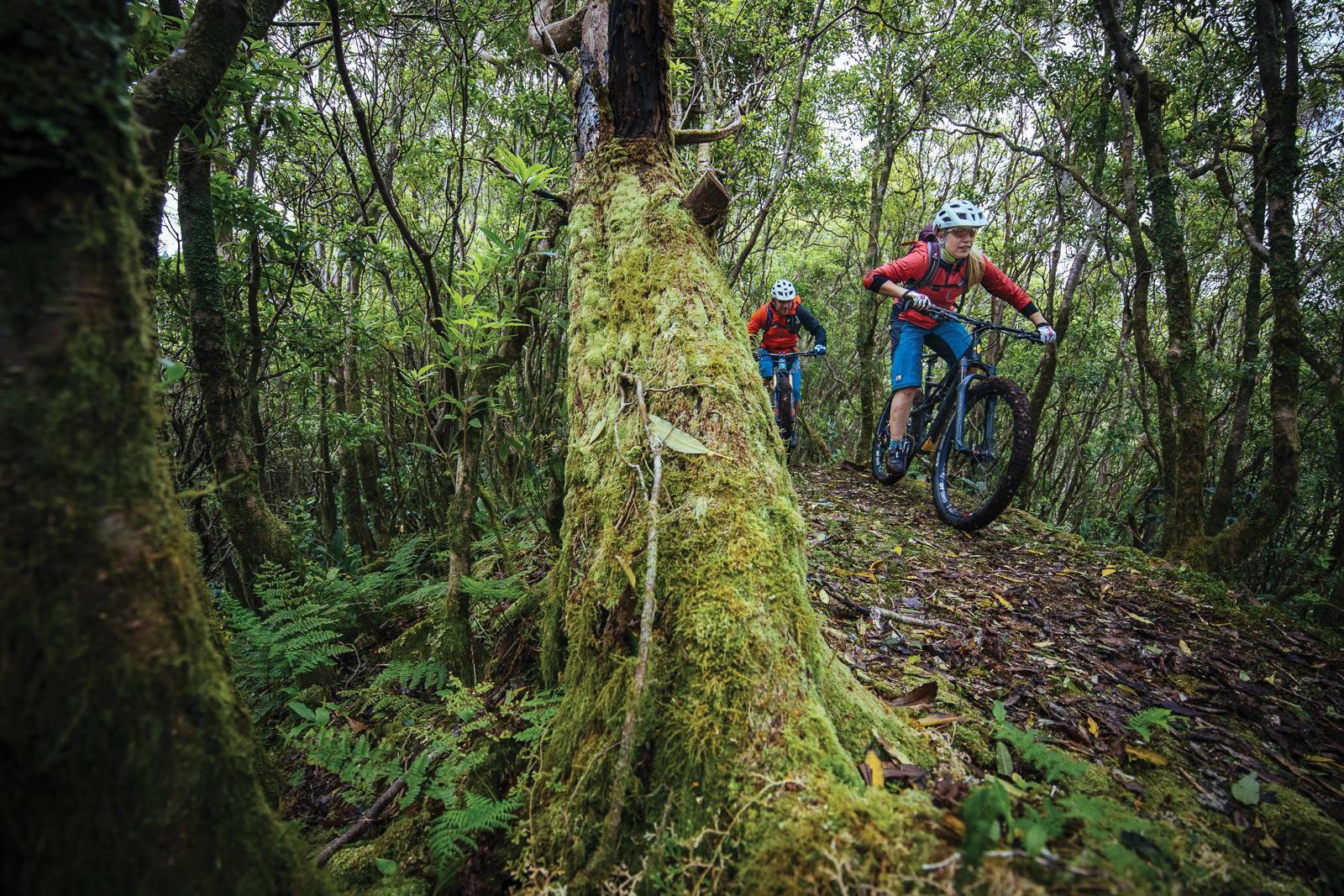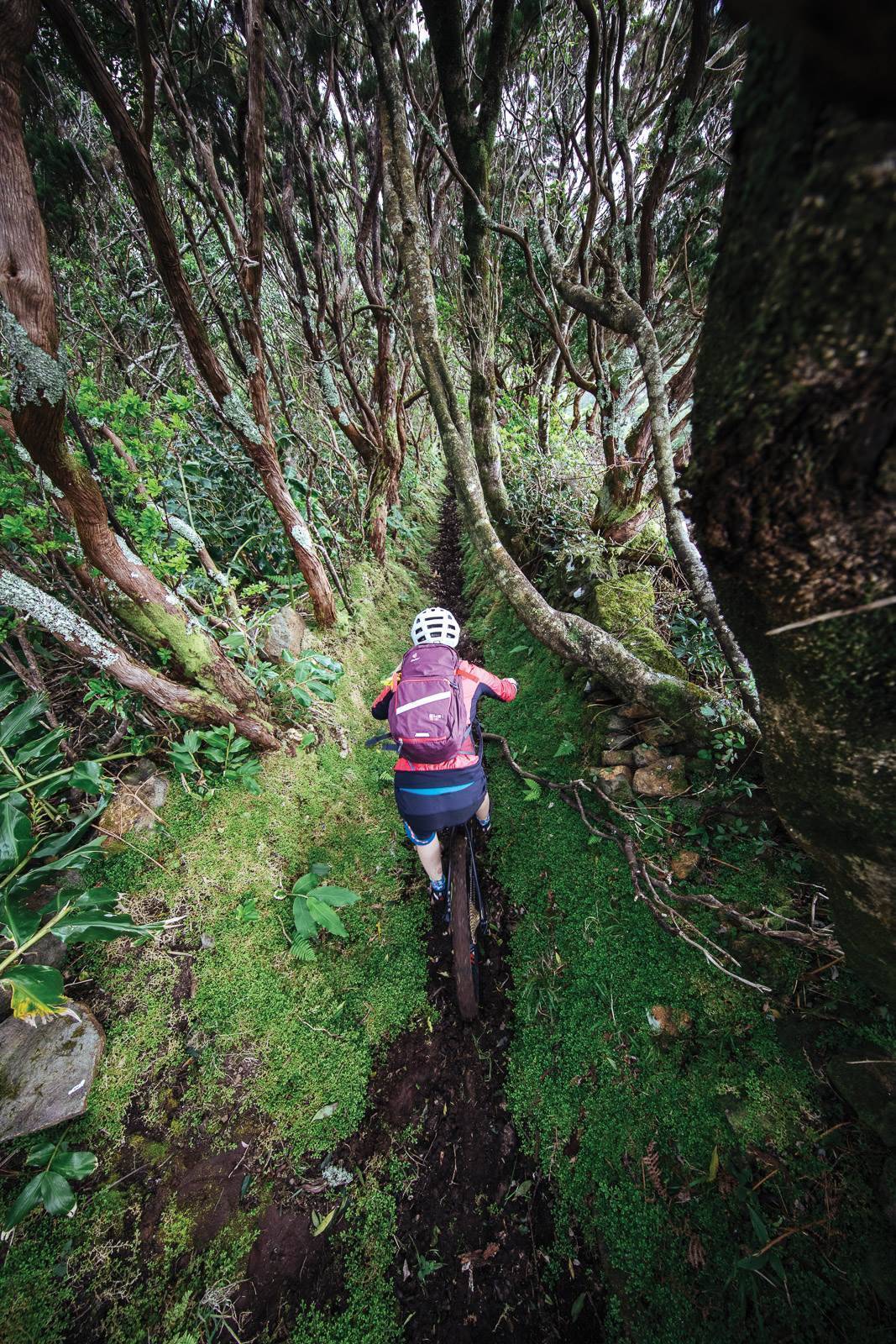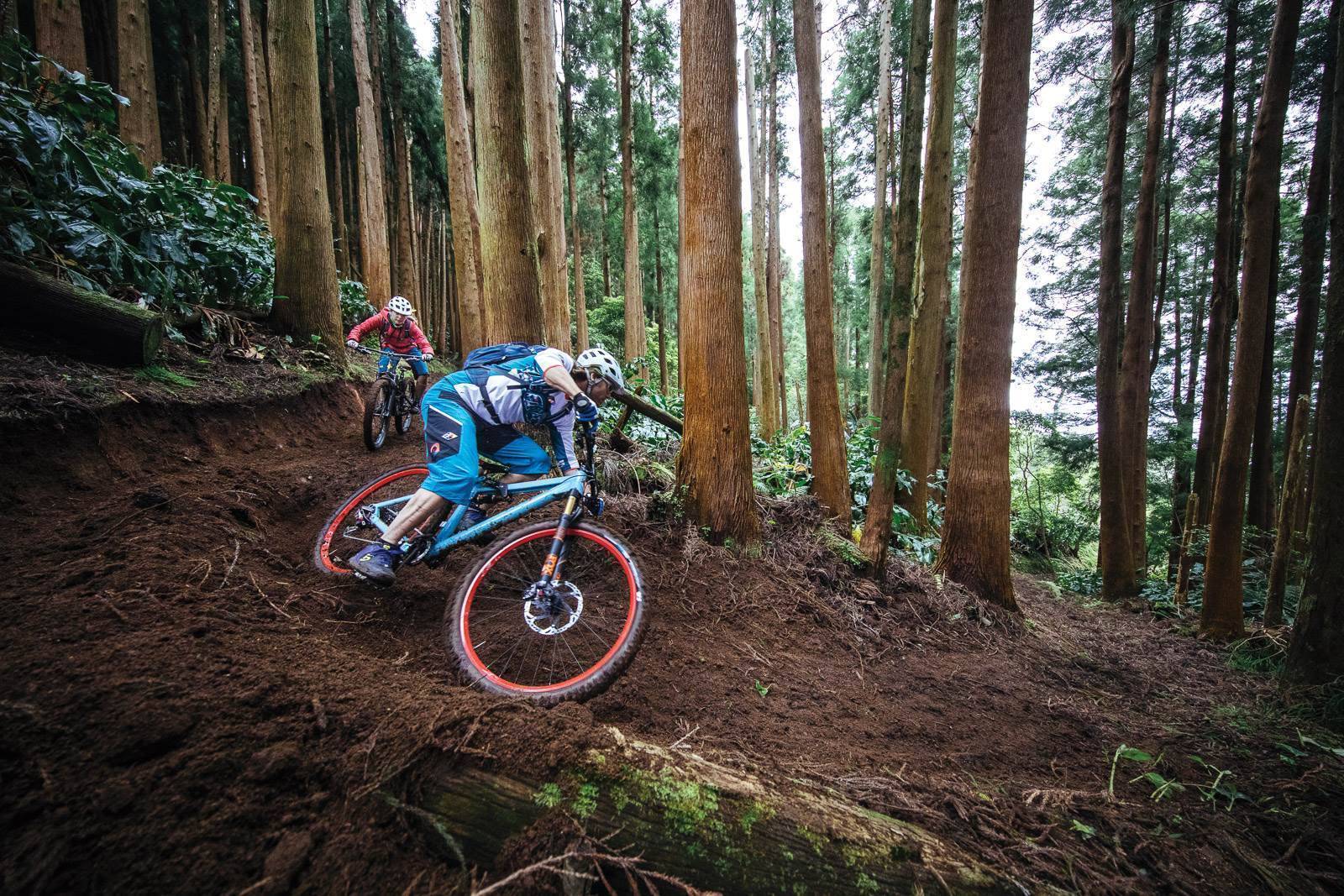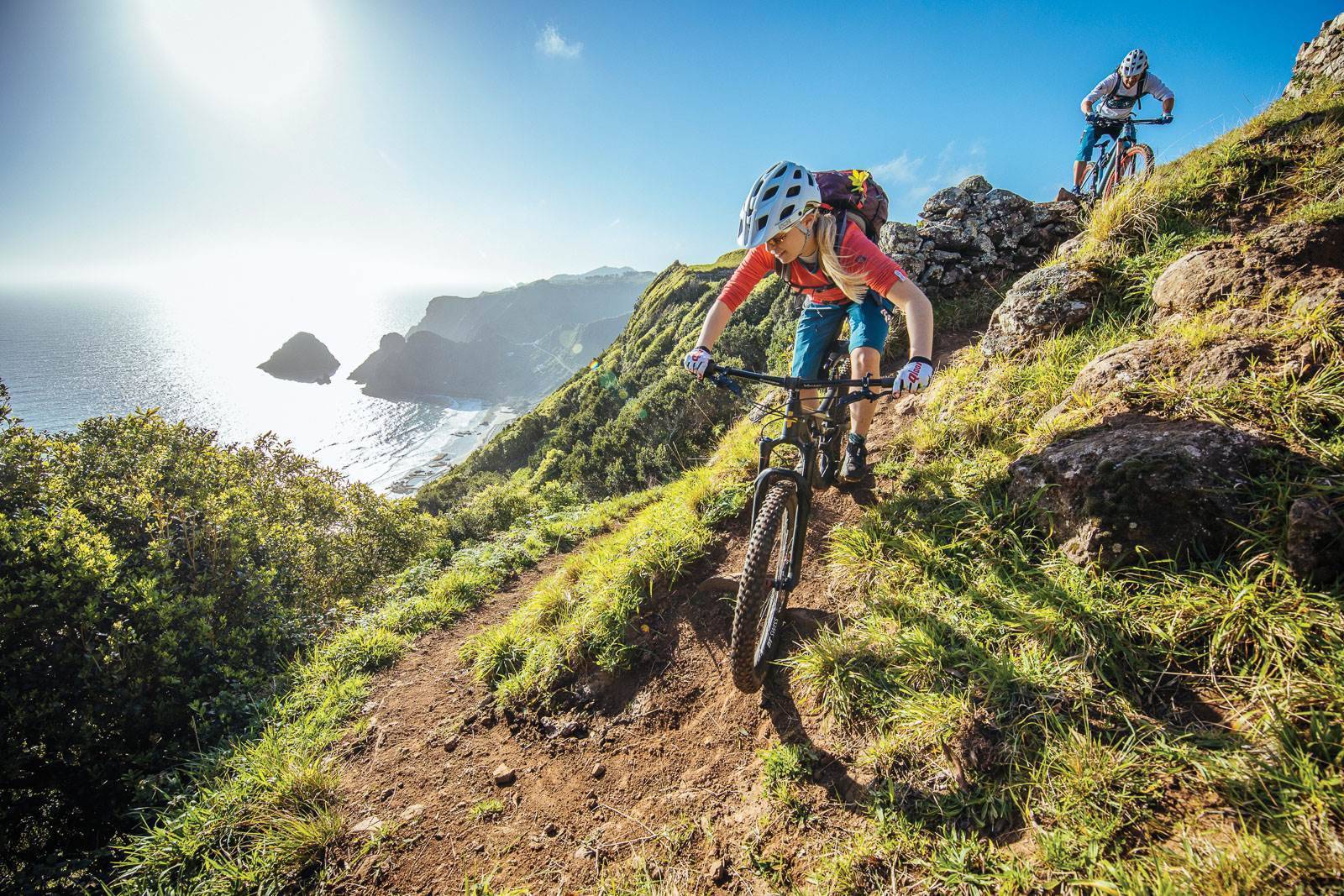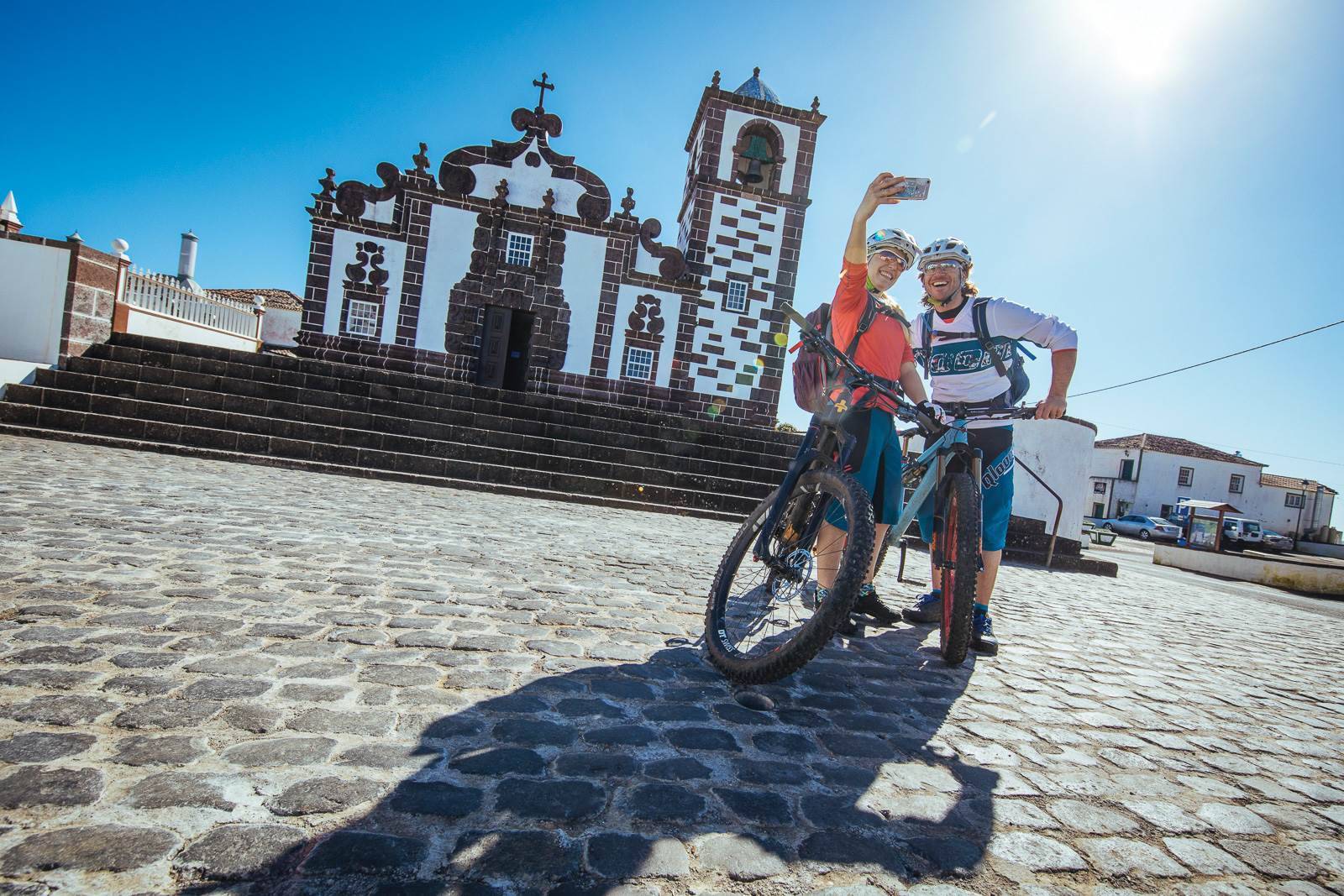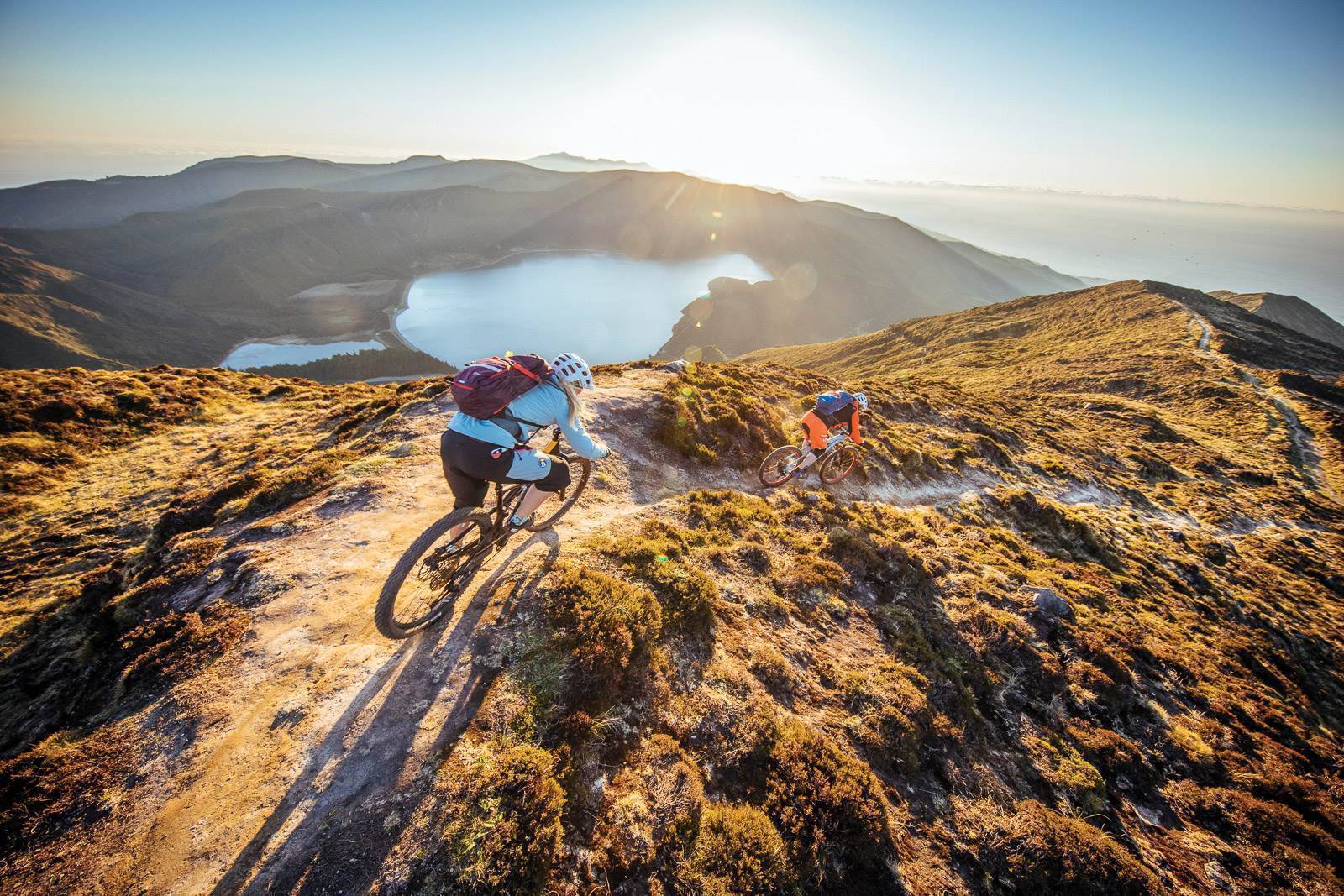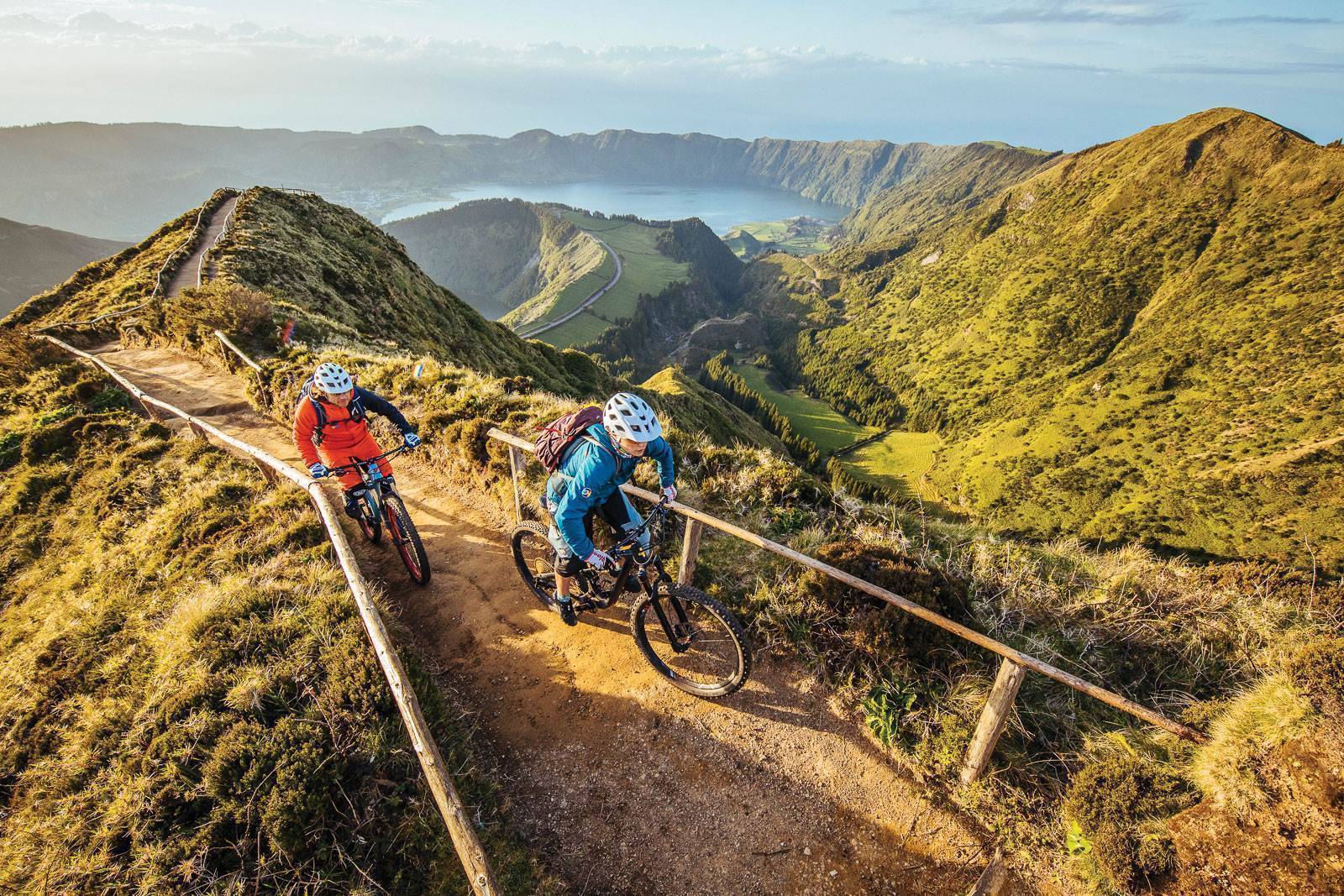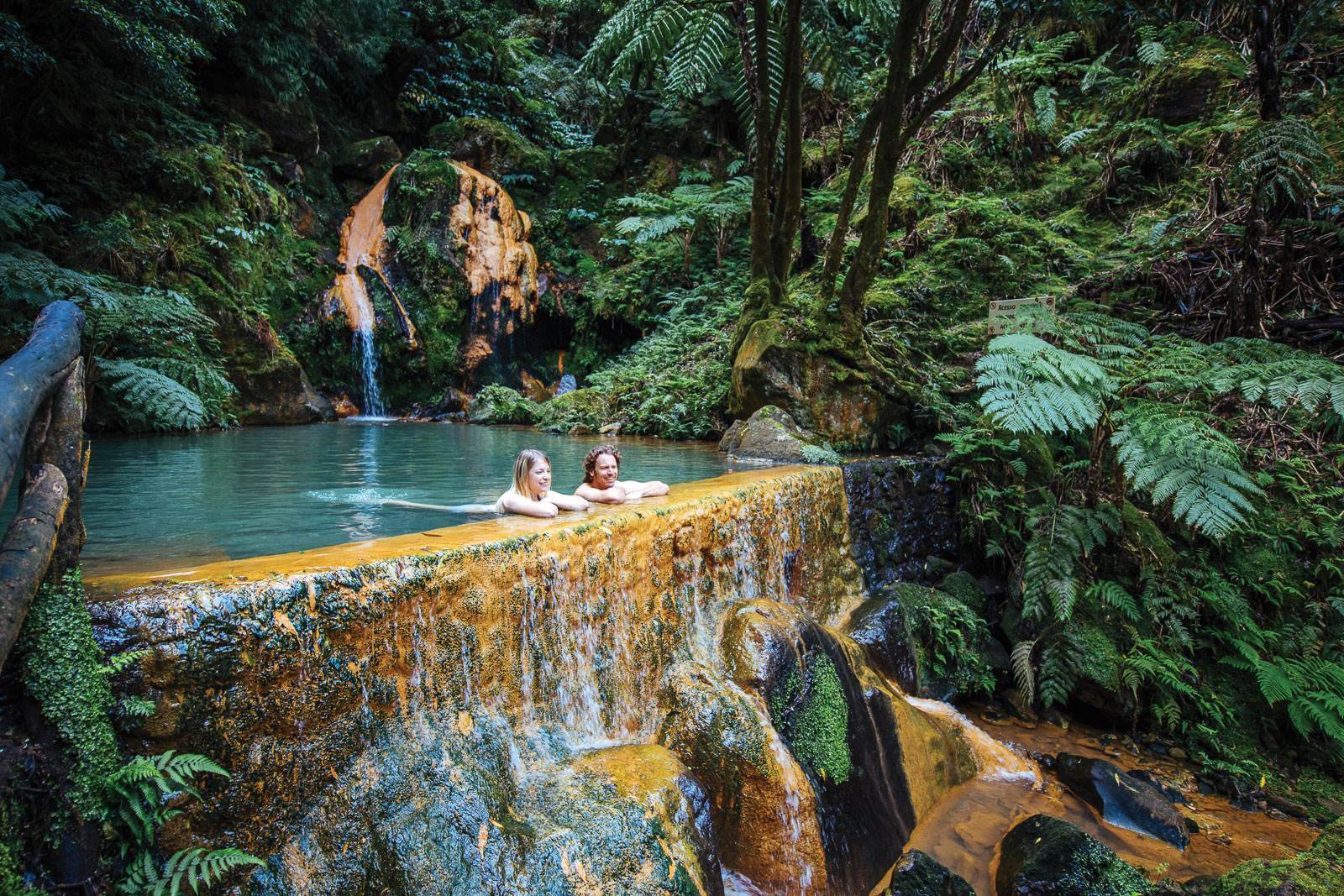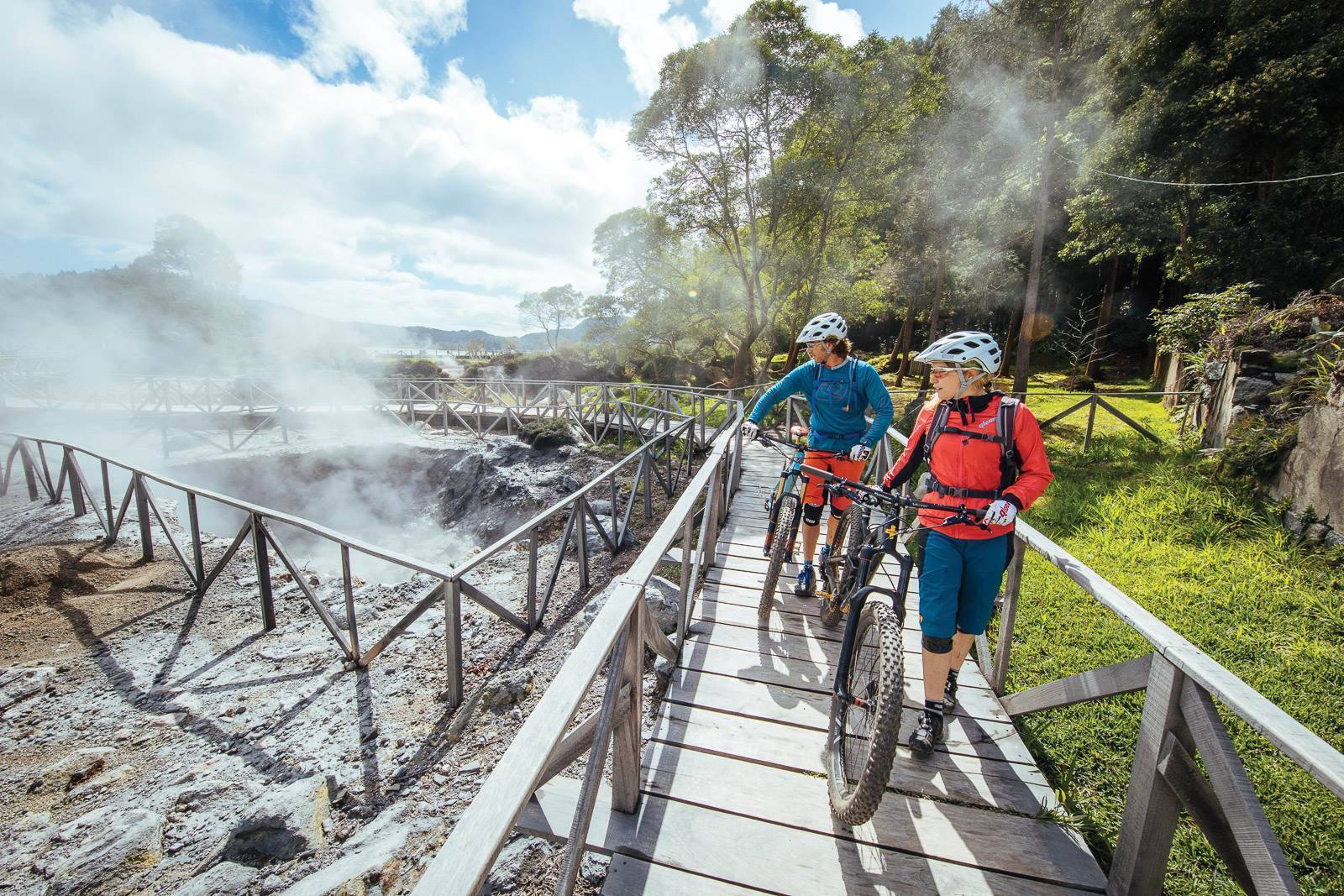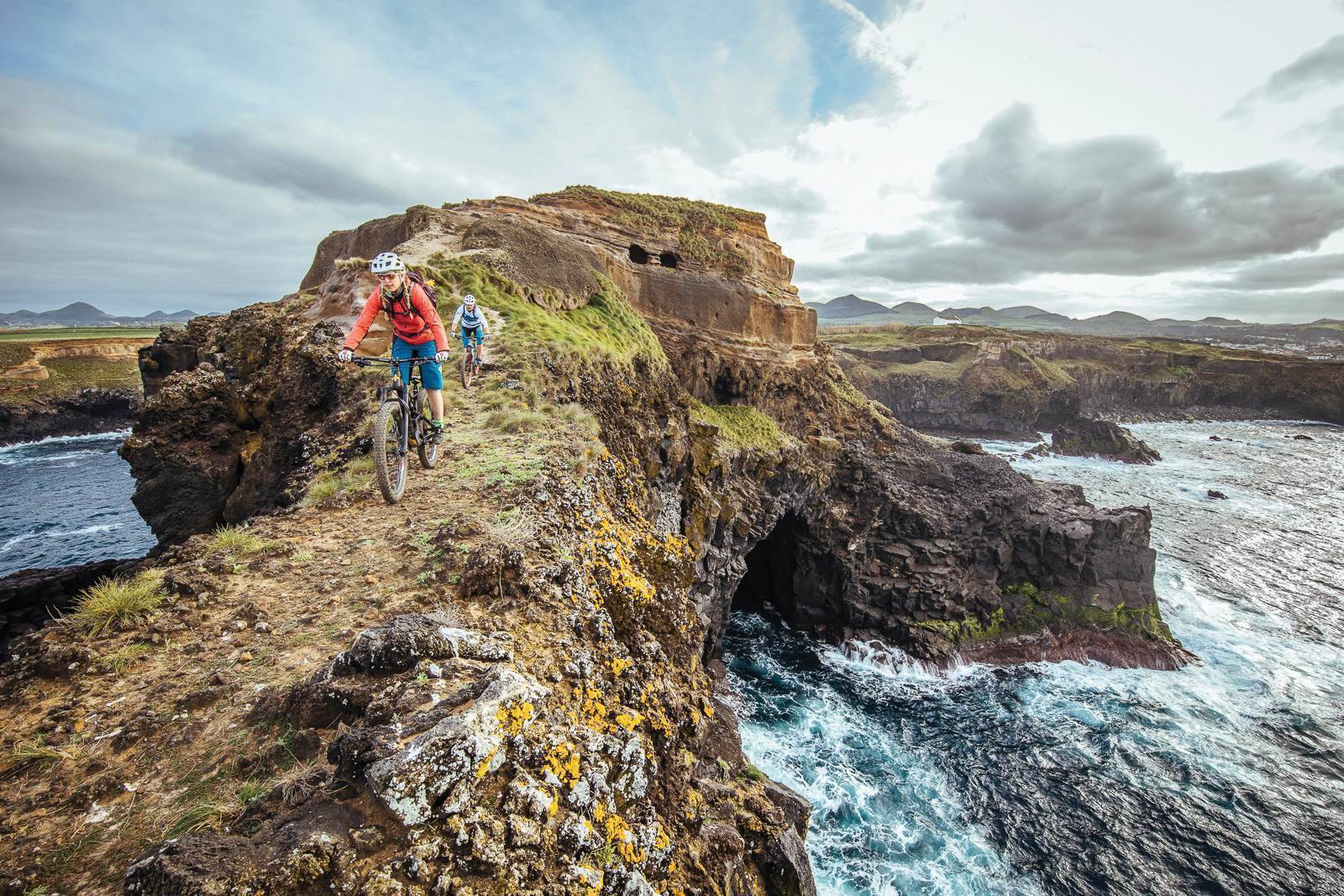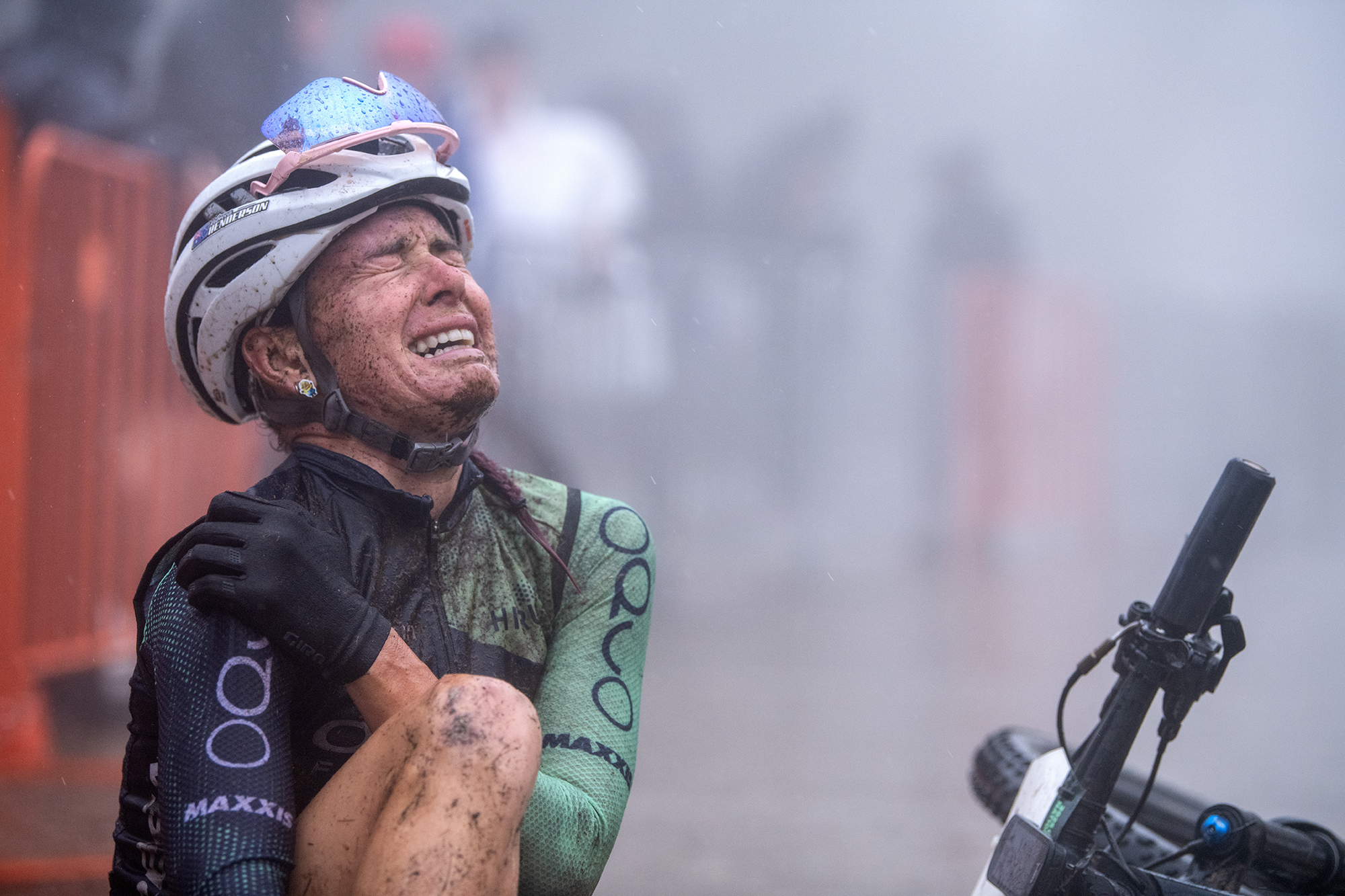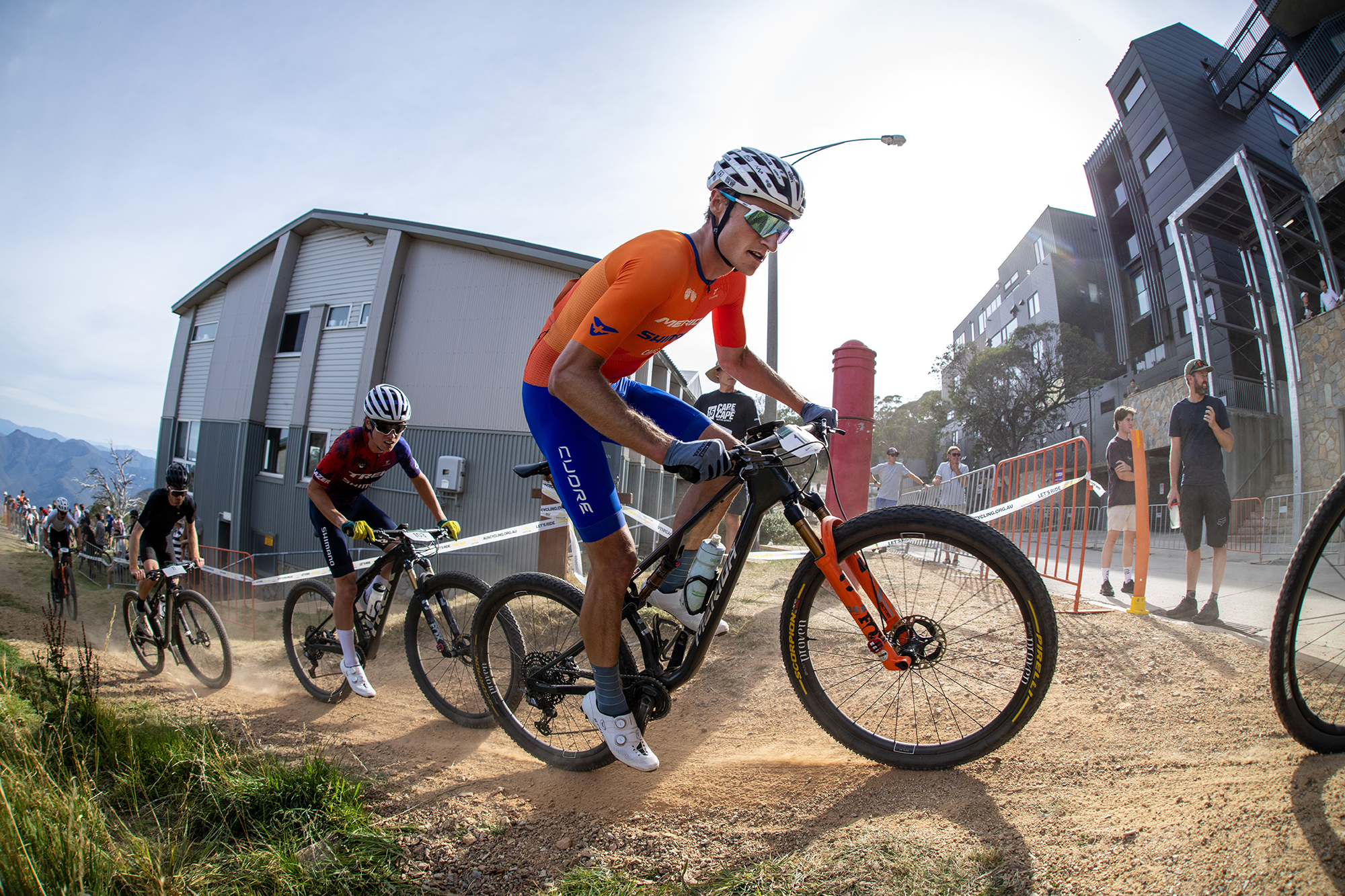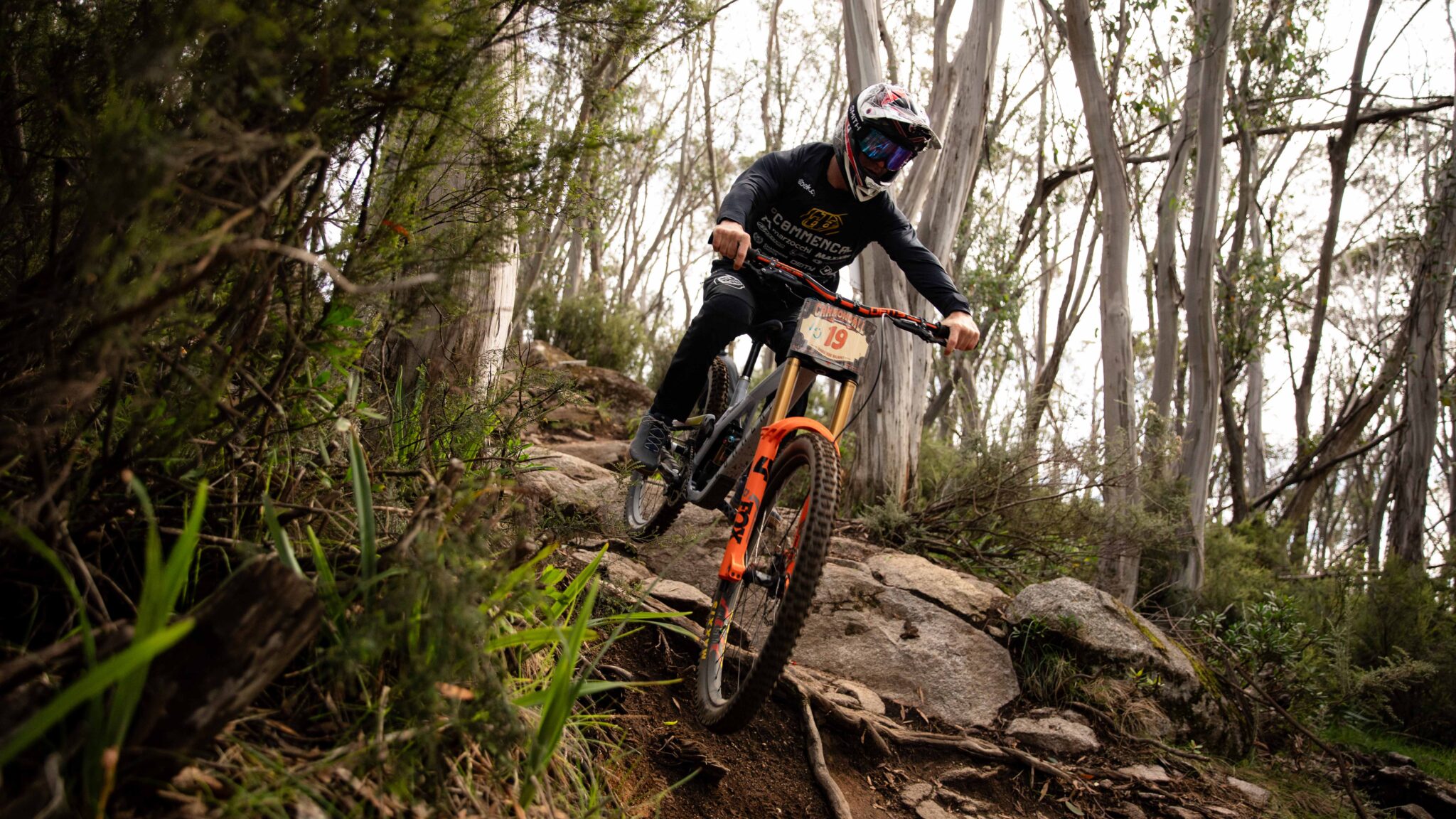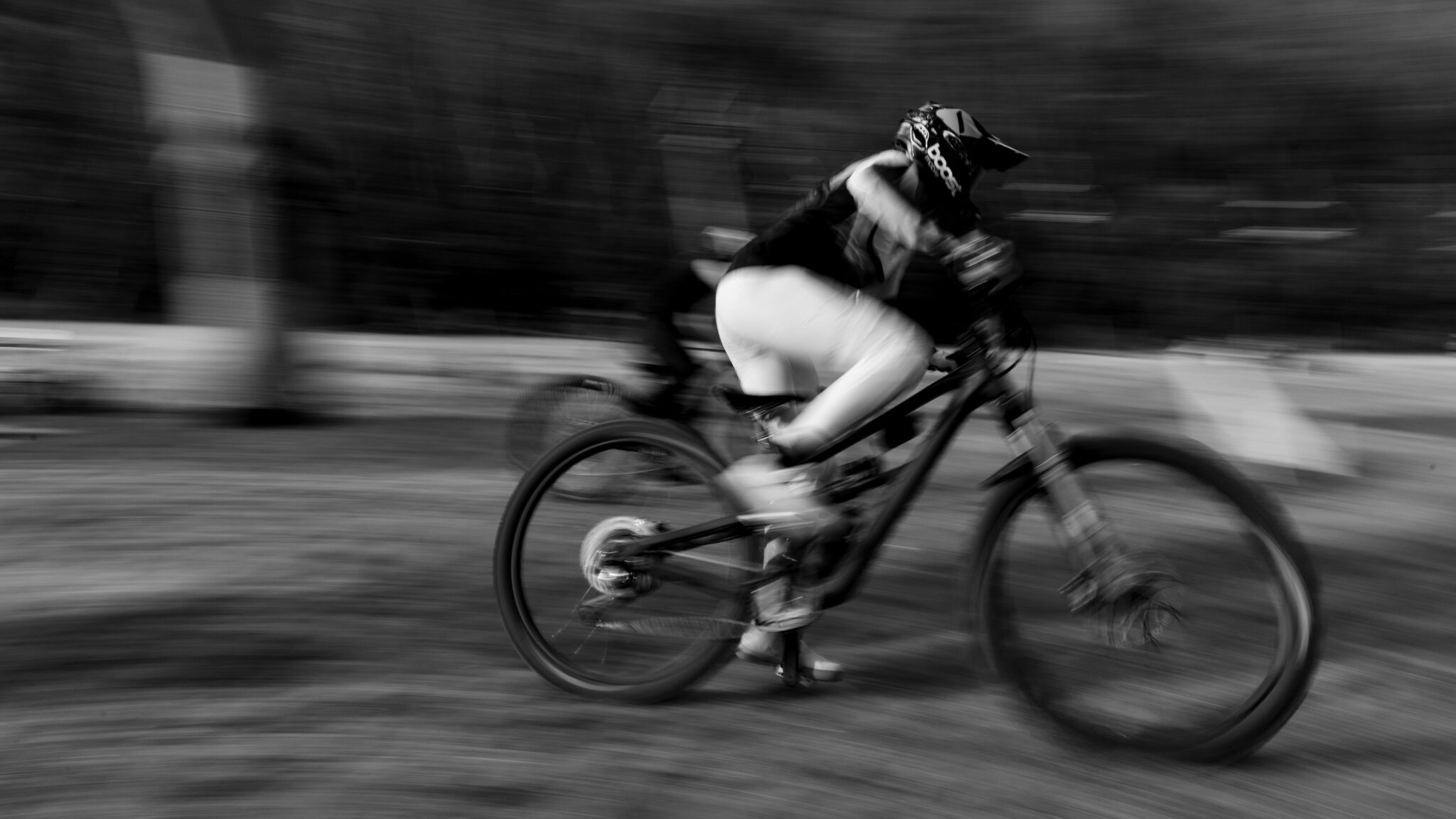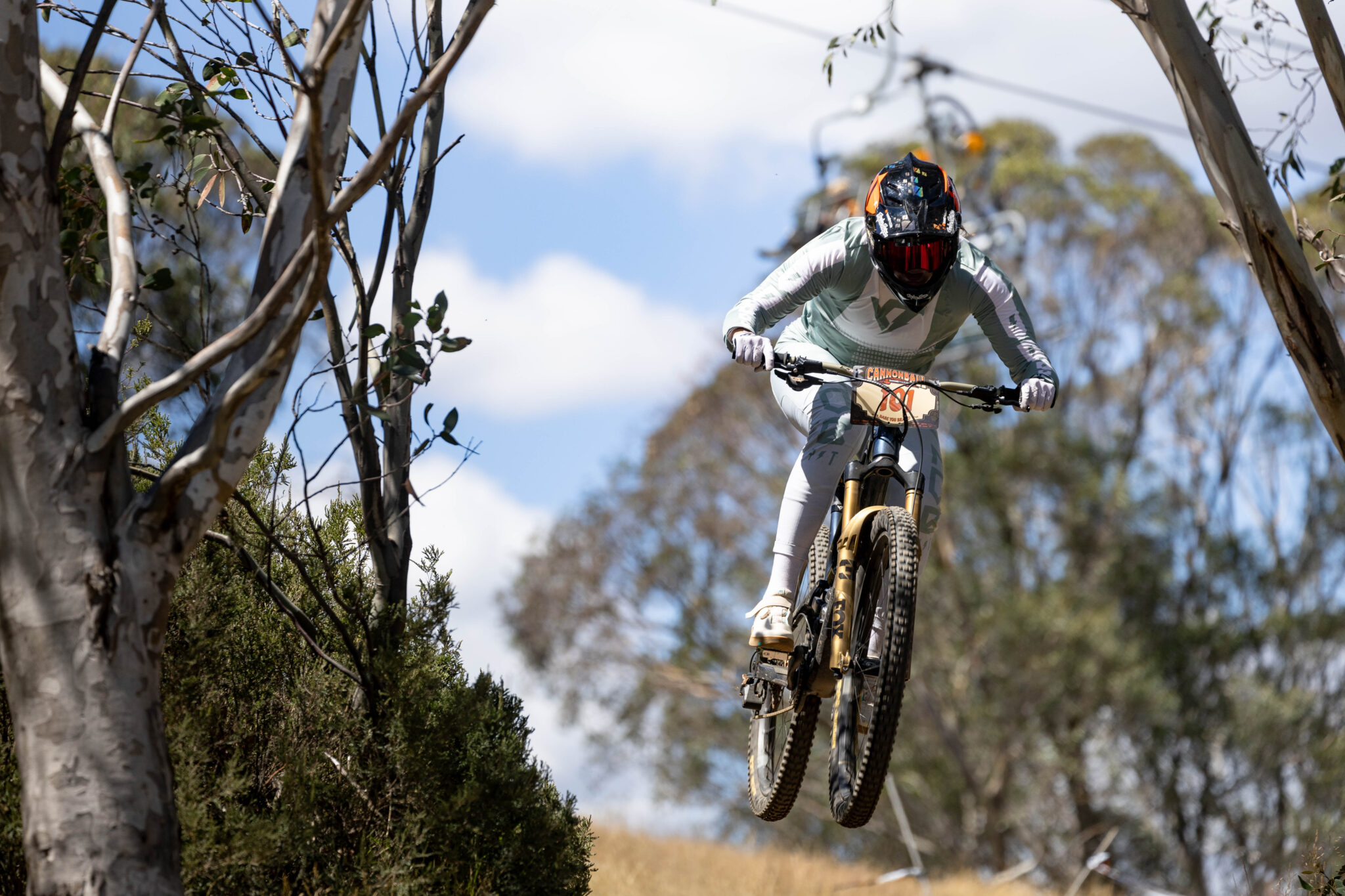Azores: Dancing on a volcano
You've heard of Madeira what about the Azores?
The plane lands only briefly after having taken off. The shortest flight of our lives lasts a mere 15 minutes and takes us from San Miguel, the largest island of the Azores, over to Santa Maria. About 5,000 people live on this island. Two of them are Andre and Miguel, who welcome us at the airport with a Landrover and a minivan. With us is Luis Melo, who knows the island like no other. The enthusiastic teacher works in tourism now and wants to further develop mountain biking on the Azores.
On the way to the hotel my travel partner Jenny and I learn that there are over 20 trails on the island. Andre tells us that the Pico Alto is the highest point with 587m and that we surely won’t have enough time to see everything. We look at each other in surprise. We’re not supposed to have enough time in two days to see everything in an area that covers 97km?
We assemble our bikes and make our way to breakfast. We make our first, typical tourist mistake and order cappuccino. It comes from a bag and not from the tempting, glistening coffee machine behind the counter. We have to order ‘pingado’, espresso with a shot of milk, Andre lets us know. We take a bite of our sandwich with cheese from the farm across the street as Luis excitedly rushes over to us. The mailman is here, Nuno Aguiar, and we’re told we have to meet him. Nuno doesn’t just deliver the post – he also brought mountain biking to the island. Having moved from San Miguel a few years ago, he began clearing old paths from the sprawling vegetation with a shovel and pick to be able to continue pursuing his passion – downhill riding. Riders still profit from his efforts to this day, even though Nuno now has little time left to take care of the trails.
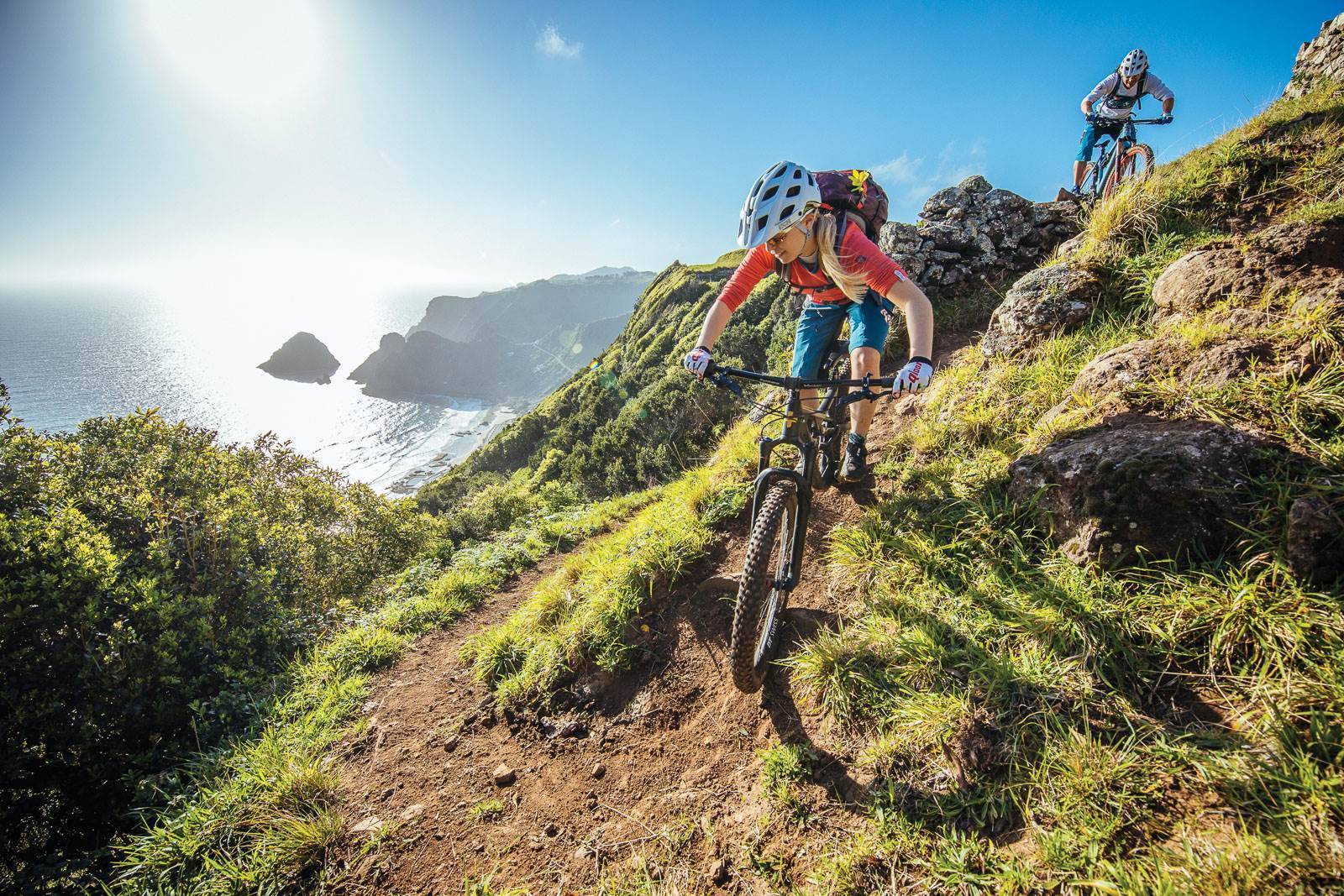
Start high, finish low
We shuttle to the highest point on the island, the Pico Alto. The further we climb the denser the vegetation gets until the thick green completely entraps us. Trails keep crossing the street and we begin to imagine the potential for mountain bikers. Once we get to the top we start immediately – a quick push and we dive into the jungle-like forest. Luis accelerates away, boosted by his local knowledge of every stone and each corner. We need to get used to the soft ground that’s spread with roots., but Luis waits for us at every crossing so we don’t get lost. The paths are like a spider web covering the mountain. ‘Santa Barbara’, our trail that leads into the town with the same name, zigzags through the dense brush but also gives us a few views of the green island. At the next stop Luis asks us to be careful given the next part of the trail passes through a barely shoulder-wide, three metre deep mini canyon that gets very slippery when wet. It doesn’t allow mistakes. And yes, the drop into the tunnel-like passage is strewn with slippery stones. The only way down is to release your brakes and head into the fun. I slip and slide, my handlebar touches the wall of the canyon twice until it spits me out into a meadow. We stop and breathe. I begin to notice my surroundings and see the first houses of Santa Barbara lying in a thick green as my pulse slows again.
The colourful windows form a stark contrast to the white facades of the houses and we learn that the rich tones used to be a sign of wealth of the families living here. We sit down in front of the impressive church in the centre of town and take in the rural charm of the little town until our shuttle arrives after just a few short minutes. We go back up the Pico Alto for our next run.
Trails of history
We’re massively impressed by the variety of the paths. They’re laboriously taken care of by hand and some passages are optimised for mountain biking. Banked curves, small drops, jumps, and short pedalling parts fit the surroundings perfectly and almost feel like they grew naturally. All trails have a name and most of them also a small story. The ‘Aeroplane’ got its name from an airplane crash in 1989 for example when a Boeing 707 crashed on Pico Alto – with a plaque commemorating the terrible incident which killed all 144 on board.
The next day also passes much too fast. We ride along steep paths down to lonely bays and cross the Barreiro de Faneca. It’s a soft and flowy landscape made of red clay sediment also known as the Red Desert and the diversity of the trail is unbelievable. We take a break at noon on the Praia Formosa, one of the most beautiful beaches on the island. The annual music festival “Mare de Agosto“ takes place here, when you can experience a week of typical Azorean music, jazz, rock, and pop as well as other cultural performances. Thousands of visitors from around the globe come to this otherwise dreamy bay with its colourful bars.
Fast farewells
We have to say that Andre and Miguel were right as we say our goodbyes at the airport that evening, heading back over to San Miguel. Two days on Santa Maria were much too short to get to know this unique island with all its possibilities.
The next morning begins just as impressively. After a short bus ride we reach our starting point high above the Lagoa do Fogo, the Sea of Fire. It lies far below us, in the middle of a crater and we seek shelter from the howling wind to watch the sun rise. We don’t have to wait long until we see the red, glistening sun on the horizon. It immerses the lower lying landscape in warm light – what an amazing spectacle of nature! We get to enjoy a magnificent view of large parts of the island from up here.
We chose this outlook not just because of the spectacular sunrise. The beginning of the so-called ‘Kathedral’ trail begins right here at the highest point and a firework of impressions explodes around us as we enjoy the longest trail on the island. Seagulls scream loudly as they circle above and follow us for a while, while farther down we dive into the thick green and the silence of the forest that surrounds the mountain. The varied trail leads all the way to the ocean. It alone is reason enough to bring your bike to the island. We indulge in a late breakfast in a small bar with huge grins on our faces.
We visit the tea manufacturer Chá Gorreana on our way back. It’s a 45 hectare large tea plantation on the north coast and the family-run company lies idyllic and far from any industry. They produce about 40 tons of tea annually and the plants that grow here are raised without any pesticides or herbicides thanks to the special climate. Around 30 workers manually process the tea to this day.
The most well-known enduro race on San Miguel is the ‘Faial Da Terra Enduro Fest’ where eight different stages are ridden over the course of two days. We don’t want to miss the mecca of enduro sports on the island and head off to the town on the south-east coast. The closer we get to the place the more nervous Luis gets, pointing in all direction and counting umpteen different trails and their combinations. Many of them are part of the enduro race.
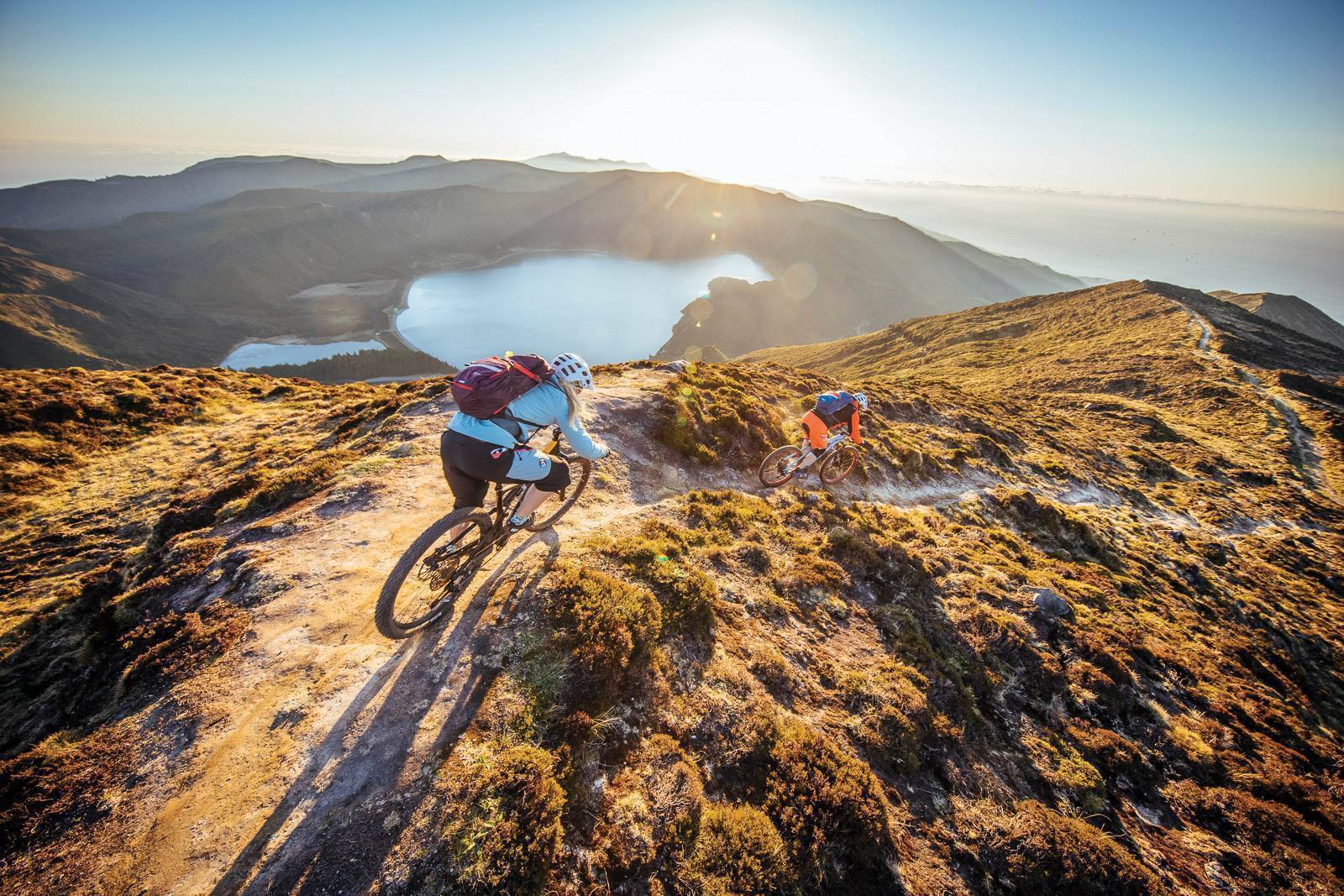
Our heads spin as we get out of the car. The fresh, clear air helps us stop the carousel of thoughts in our minds and brings us back to reality. We discover a wooden sign that reads ‘Pico Grande’ on the other side of the road, featuring a pictogram of two mountain bikers.
“We built a few new jumps, but it’s all possible,” beams Luis. He’s here a lot and basically knows every rock. Shortly after the trail drops, we see a riverbed with a jump over it. Luis accelerates and whirls though the air. The rest of the crew rides around the ramp. I usually don’t like jumping over gaps I wasn’t able to look at before, but I pluck up my courage and give it a go, motivated by the waiting team. I scan my surroundings in a rush and then comes the moment when it’s too late to brake. I clench my teeth and jump. I land softly after a few metres in the air. “Built perfectly,” I think to myself with a huge smile on my face and we carry on. Every now and then you find a banked curve or a jump until the fun ends in Faial Da Terra. High Five! We’re full of adrenalin.
Local support for a global sport
The Pedra Torta, a stony and completely natural path is on the program before noon, too. The descent puts broad smiles on our faces until we are soon sitting on a wooden patio in the middle of town as Luis cordially greets a man in jeans and shirt. We learn that it’s Paulo Nazare, the mayor. He sits down with us and tells us about the development of mountain biking in his region. He supports anything that helps improve the sport and is in accordance with environmental protection. A network of trails has developed here over the years which is cared for by the community and which is constantly enlarged. All trails have been equipped with signs over the past years that mark their beginning for better orientation.
We make the best of the stormy weather the next morning and take a walk along the beach. The spray of the breaking waves is huge and the wind pulls at us. I find it fascinating over and over to feel the power of nature this close.
Sun, rain, wind, and fog constantly take turns here on the Azores. It’s possible for fog to spread over the plains in the morning, to have the sunshine in the afternoon, and to experience a short downpour in the evening. These changes aren’t unusual in the middle of the Atlantic, close to the equator though. Nature profits from the consistent climate and the warm rain and it makes the unique flora and fauna of the Azores possible – year round. There are no heat waves or cold snaps. Snow only falls on the highest mountain of the Azores, the Pico. The forecast promises warm temperatures, blue skies, and dry weather when a high-pressure system from the Azores is on its way to Central Europe. There is no such thing on the Azores themselves, though. It’s only called that because warm air spreads from close to the equator to Central Europe.
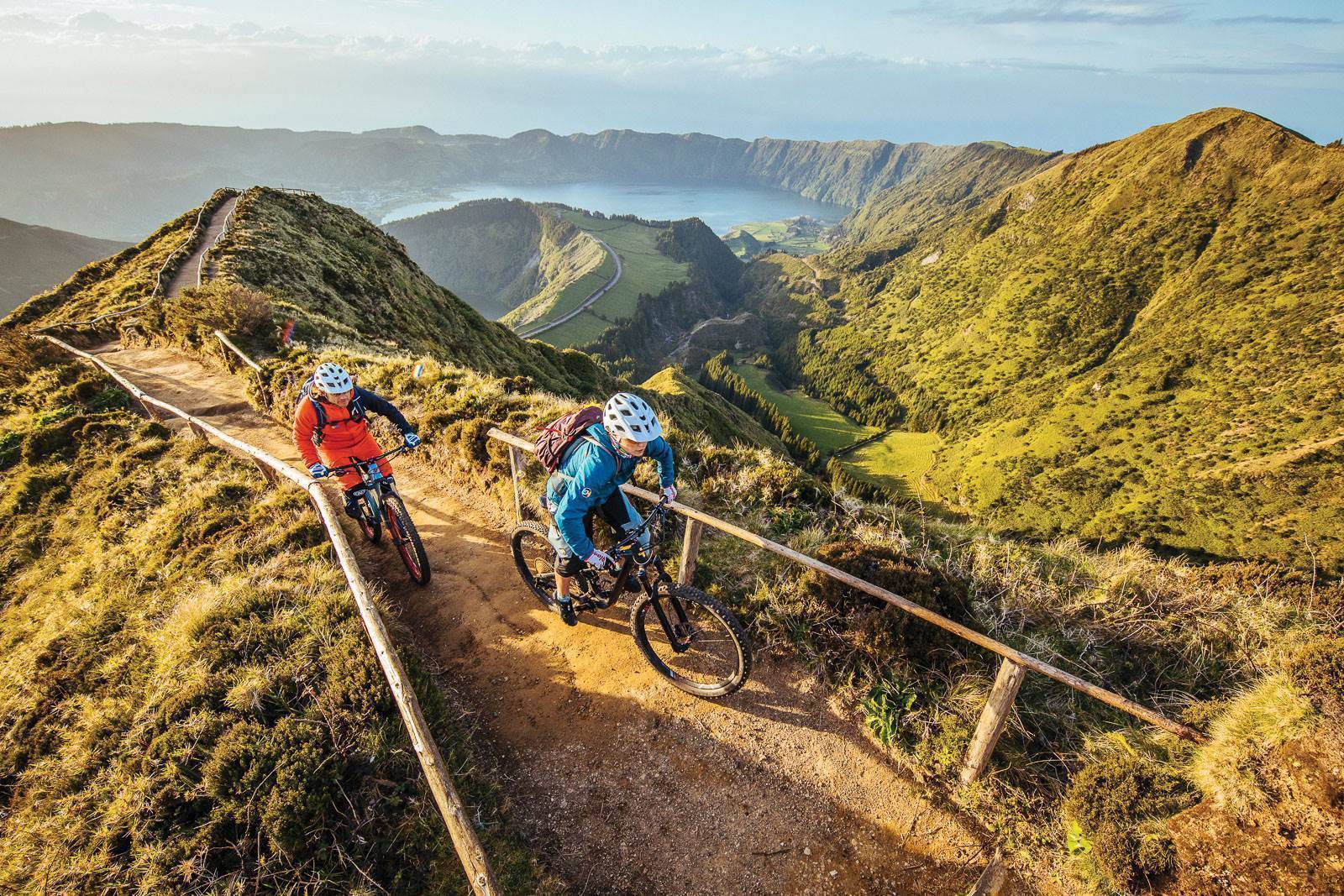
The shuttle arrives on time at 11am. Today we want to visit the town Furnas and its lake with the same name. Hot sulphur springs bubble from the ground – something we’ve usually only seen from pictures from the USA or from Rotorua. Right next to it lies a highlight for mountain bikers: the ‘16 Seconds Trail’, which is the scene of various downhill races. Banked curves, doubles, and tables are perfectly built into the compact ground in different lines, while the 550 vertical metres pass through a jungle-like forest and guarantee a rollercoaster feeling. There’s another trail parallel to it and a third is being planned. We’re so enthusiastic that we have to ride down through the huge ferns a second time.
We find the perfect ending to the day in truly magical surroundings. The Caldeira Velha are natural thermal springs with several pools. A waterfall feeds the top pool and serves as a shower. The temperature is 34 degrees! A little lower, a smaller pool with about 38 degrees invites you to linger – so we lie on our backs, look into the thick jungle surrounding the thermal springs, and feel like we’re in a different world.
We let the memories of the last couple of days on the two islands wash over us as we lay in the warm spring water – tired but also captivated by the scenery. We bathed our senses not only in warm water but also in impressions, smells, and tastes. The affectionate people of the diverse islands have impressed us greatly. The possibilities for mountain bikers, no matter if race bike, cross country, or enduro, are so varied that we’ve already booked our next trip to the Azores in our heads.

Azores need to know
The Islands
The Azores are a group of Portuguese islands in the Atlantic Ocean. They are composed of nine larger and several smaller islands about 1,369km west of the European mainland and 4,382km east from North America. The Pico with its 2,351m is the highest mountain on the island with the same name. It is also the highest mountain in Portugal. Sao Miguel and Santa Maria offer the best infrastructure and selection for lovers of singletrack. There are bike shops, shuttle services and guides on both islands.
Getting there
The easiest way to get there is to take a plane to Sao Miguel (Ponta Delgada, PDL). Azores Airlines will transport bikes.
Best time for riding
The ideal months are May, June, September, and October. Temperatures are around 22-24 degrees and humidity is lowest. It’s also the quietest time on the islands.
On-site service
smatur.pt organises shuttles, guiding, and other outdoor activities on Santa Maria.azoresadventureislands.com offers entire trips as well as individual tours and shuttles. All guides are top-notch enduro riders.
Trail maps
Trailforks offers all trails you can find on the islands. Perfectly administered database with GPS tracks and up-to-date reports on condition and state of trails.

